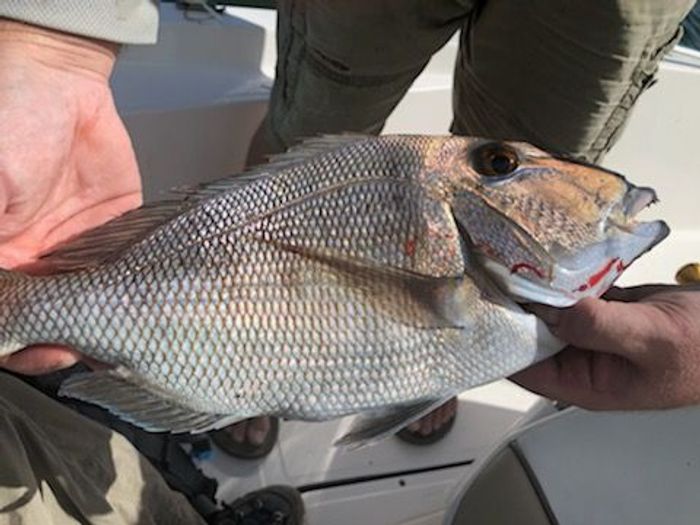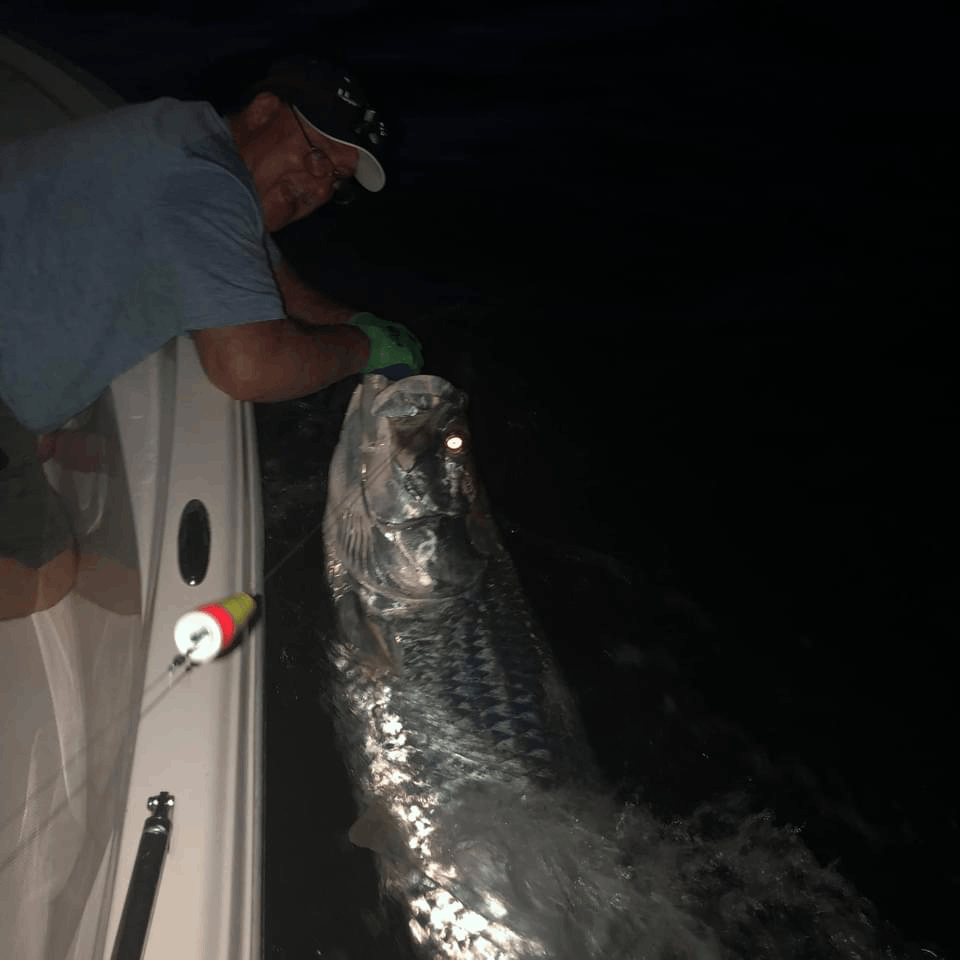Bow to the Silver Kings Down South
Become an expert tarpon angler by booking Bill as your fishing guide. He will help you with everything you need to know to catch that favorite game fish!
A Guide to Tarpon Fishing in the Spring by Captain Bill Brown of Bill Fish Charter Services
When the waters finally start warming up for the advent of the spring season after a long and cold winter, it’s time to head down to the beautiful archipelago of the Florida Keys for some legendary tarpon fishing.
The Florida Keys is an epic fishing destination all year round, but it is an absolute haven during spring for anglers wishing to tackle the mighty game fish. From mid-March to late June, you will find schools of tarpon passing through Key West, Bahia Honda, Marathon, Islamorada, Key Largo, and the mainland coastline. They might even take a breather to ambush and feed on bait schools swept by the tides on the cuts, channels, and bridge supports along the way.
Every angler who has had a brush with the mighty tarpon always has an adrenaline-filled story to tell. Not all of them may have managed to land all the ones they've hooked, but every tarpon angler knows that each unsuccessful fight with this trophy fish is a lesson learned - and a thrilling one at that. That's why targeting tarpon is quite an addictive sport, especially here in the surrounding waters of the Florida Bay, Gulf Coast, and the Atlantic Ocean, where I.G.F.A. Silver King World Records have been established.

Tarpon: Florida’s Favorite Game Fish

Tarpon (Megalops atlanticus) are up there among Florida’s favorite trophy fish and are known for their astounding ability to jump 10 feet out of water. You’ll find tarpon in the warm coastal waters of the Western Atlantic, around the Gulf of Mexico, Florida, and the West Indies. You can also find them in bays, estuaries, and mangrove-lined lagoons in other subtropical and temperate climates. Though they can thrive in water temperatures between 75 to 80 degrees, they are more actively biting when the waters are in the low 80s. As a species, they’re tough and adaptable. They can travel upstream into brackish water and can even withstand low oxygen situations. They’re able to do this with their modified air bladder system, which allows them to “gulp” or inhale atmospheric oxygen. The only thing that tarpon are sensitive to is temperature changes.
Techniques, Tackle, and Bait to Use on the Mighty Tarpon
When targeting the majestic Silver King, it’s important to note that they will astound you with their acrobatics and fighting power. This remains true whichever technique you choose to employ. So before your jaw completely drops at the sight of this mighty fish jumping out of the water, remember: Bow to the king. Focus as the fish rises during its run and keep your rod elevated so that when it finally breaks the surface, you can instantly drop your rod tip, pointing it at the fish directly. This bit is crucial as aerial tarpon can toss a hook in midair if you keep your line taut.
Now let’s talk about the tackle. Anglers usually use conventional and spinning tackle in the 20- to 30-pound class (or bigger) with the tarpon. If you’re looking for a specific tackle to use, you will do well with conventional reels such as the PENN Torque 25, Squall 25, and Fathom 25 series, along with spinning reels such as PENN Torque 6500, Slammer 6500, and Spinfisher 6500 mounted on 30- to 80-pound Carnage rods.
The ideal line size for these reels is typically the 30- to 40-pound test, with a mono top, shot spooled onto braid backing. A 40- to 80-pound test fluorocarbon leader is best based on the size of the fish, water clarity, and the bait you’ll use. I typically use Berkeley ProSpec mono and Spiderwire braids with success.
Most Florida Keys captains will recommend using circle hooks as they latch well into the corner of the tarpon’s bony mouth. Your choice of hook size will depend on what baits you will use. Circle hooks sized 5/0 to 7/0 are ideal for smaller baits, while bigger baits like mullets require 7/0 to 10/0 circle hooks.
For the Silver King, the adage “Bigger baits tend to catch bigger fish” is not always the case. They can just as easily gulp down a small crab as they will fight for that bigger mullet. Mullets are usually the preferred choice at the start of the season, but they can disappear around April, so anglers will typically switch to declawed blue crabs. Around the Keys, you can cast net your mullet or buy them at bait trucks in the marinas. However, many tarpon anglers in the area would tell you to go for the crabs as they are consistently easier to purchase and have a higher hook-up rate.

If you’re fishing on a boat, you can follow the example of many tarpon anglers who go drifting along the flats’ edges while floating live bait under floats, mimicking the way baitfish behave when carried by the ebb and flow of the tides. You could also anchor up on the side of the bridges where tides normally crash.
If you’re fishing from the piers, shores, and other structures, you can modify the same boat techniques while using the same live baits or lures that mimic these baits, such as Sebile, Rapala, and Gravity Tackle lures.
The Benefits of Booking a Tarpon Guide
If it’s your first time targeting tarpon, you might be thinking about towing your own boat and challenging yourself all the way. You could, but it’s always better to book a local guide whose boat and tackle are set up for targeting tarpon, especially on your first try. Look at it as a masterclass in handling the tarpon in the safest and most effective way. Navigating the narrow winding channels in the Keys in the hot pursuit of a trophy tarpon might be too much for a novice angler to handle on his own.
The Ultimate Challenge: Fly Fishing for Tarpon
If you’re an avid fly fisher, you might want to try your beloved technique on the king. You’re in for the fight of your life. Make sure to use fly rods in the 10-to-12 weight class if you’re targeting adult tarpon, as these rods can handle the fight and beat the fish faster. Anything less will be destroyed by the tarpon’s violent thrashing. They can rip line-off reels in the blink of an eye and put stress on the drag. To guarantee success (or at least come close to it), get your fly patterns at the local tackle shops. Target juvenile tarpon with 3- to 5-inch long flies tied with 2-2/0 hooks and up to 5/0 for larger fish.
Important Things to Remember
If you’re not fishing with a guide, you will need to purchase a non-resident saltwater license to target tarpon in the Keys. You can only fish for tarpon using hook and line angling. Note that these fish are a catch-and-release-only species in the state of Florida. You can only retain a fish if you’re pursuing an I.G.F.A. world record and have purchased a $50 tarpon tag that allows you to retain one fish per year.




